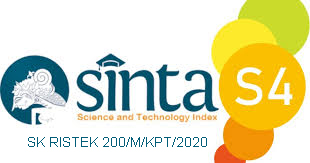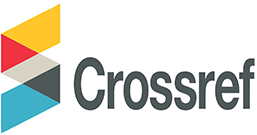Analisa dan Perbandingan Kinerja Routing Protocol OSPF dan EIGRP dalam Simulasi GNS3
Abstract
Router is the network equipment for route the packet from one network segment to another in a bigscale network. Router can route packet because there is a routing table in router configuration. Routing table is anaddress list of source and destination address where the packet will be routed. There are two methods of routing tableconfiguration, static routing and dynamic routing. Static routing is a routing table configuration method where all ofrouting table content is configured manually, usually for a small scale of network. Dynamic network is a routing tableconfiguration method by the router automatically, usually for a big scale of network. A dynamic routing is built fromthe routing information collected by the routing algorithm. There are two routing algorithm, link-state and distancevector algorithm. This simulation will be built in GNS3 simulation software. Goal of this research is to compare theperformance between that two algorithm from two routing protocol that using each of those two algorithm. Thecomparison will be running between OSPF routing protocol on the link state routing protocol and EIGRP on thedistance vector routing protocol side. The result of this analysis and comparison of those two routing protocol isexpected to be a reference of choosing better routing protocol in building a network
Keywords
Full Text:
PDFReferences
Al-Otaibi, S. T. & Ykhlef, M. 2015. “International Journal of Scientific Research and Innovative Technology”. Immunizing Job Recommender System. 2(10), 97-110.
Pfleeger, P. C., Pfleeger, S. L, & Margulies, J. 2015. Security In Computing Fifth Edition. Prentice Hall.
Rachmawanto, E. H. 2010. Teknik Keamanan Data Menggunakan Kriptografi Dengan Algoritma Vernam Cipher Dan Seganografi Dengan Metode End Of File (EOF). Universitas Dian Nuswantoro.
Ramadayanti A. L. 2008. Analisa Algoritma Vernam (OTP). Jurusan Teknik Informatika Universitas Sriwijaya.
Soleh, M. & Hamokwarong, J. V. 2011. “Momentum”. Aplikasi Kriptografi Dengan Metode Vernam Cipher Dan Metode Permutasi Biner. 7(2), 8-13.
Sugianto & Yuniarto, T. 2014. ”Jurnal Ilmiah SISFOTENIKA”. Kriptografi Gabungan Menggunakan Algoritma Mono Alphabetic Dan One-Time Pad. 4(1), 53-63.
Supriyatna, A. 2014. “Prosiding Seminar Nasional Aplikasi Sains & Teknologi (SNAST)”. Analisis Tigkat Keamanan Sistem Informasi Akademik Dengan Mengkombinasikan Standar BS-7799 Dengan SSE-CMM. A 181-188.
Teng, G. & Papavasiliou, F. N. 2007. Immunoglobulin Somatic Hypermutation. New York
Annu. Rev. Genet. Timmis, J., Hone, A., Stibor, T. & Clark, E. 2008.“Theorical Computer Science” Theorical Advances in Artificial Immune Systems. 403(2008), 11-32.
DOI: https://doi.org/10.31326/jisa.v1i1.300
Refbacks
- There are currently no refbacks.
Copyright (c) 2018 Gede Andika Loka, Silvester Dian Handy Permana, Ketut Bayu Yogha Bintoro

This work is licensed under a Creative Commons Attribution-ShareAlike 4.0 International License.
JOURNAL IDENTITY
Journal Name: JISA (Jurnal Informatika dan Sains)
e-ISSN: 2614-8404, p-ISSN: 2776-3234
Publisher: Program Studi Teknik Informatika Universitas Trilogi
Publication Schedule: June and December
Language: English
APC: The Journal Charges Fees for Publishing
Indexing: EBSCO , DOAJ, Google Scholar, Arsip Relawan Jurnal Indonesia, Directory of Research Journals Indexing, Index Copernicus International, PKP Index, Science and Technology Index (SINTA, S4) , Garuda Index
OAI address: http://trilogi.ac.id/journal/ks/index.php/JISA/oai
Contact: jisa@trilogi.ac.id
Sponsored by: DOI – Digital Object Identifier Crossref, Universitas Trilogi
In Collaboration With: Indonesian Artificial Intelligent Ecosystem(IAIE), Relawan Jurnal Indonesia, Jurnal Teknologi dan Sistem Komputer (JTSiskom)
JISA (Jurnal Informatika dan Sains) is Published by Program Studi Teknik Informatika, Universitas Trilogi under Creative Commons Attribution-ShareAlike 4.0 International License.


















